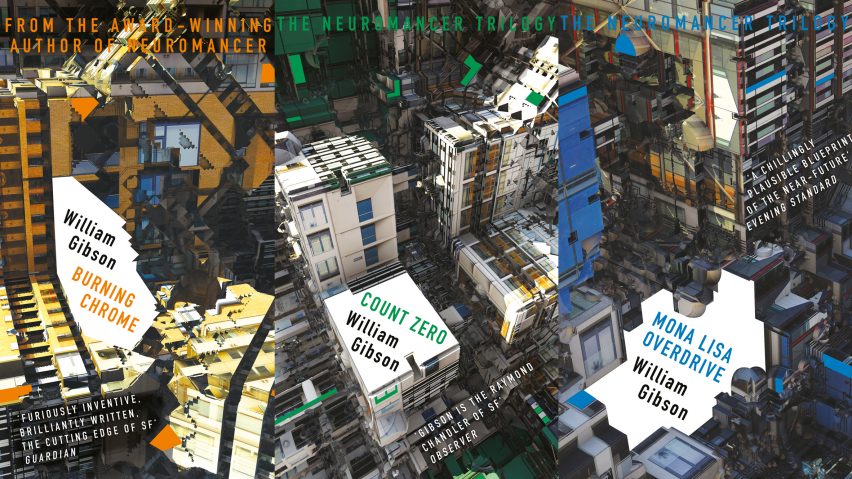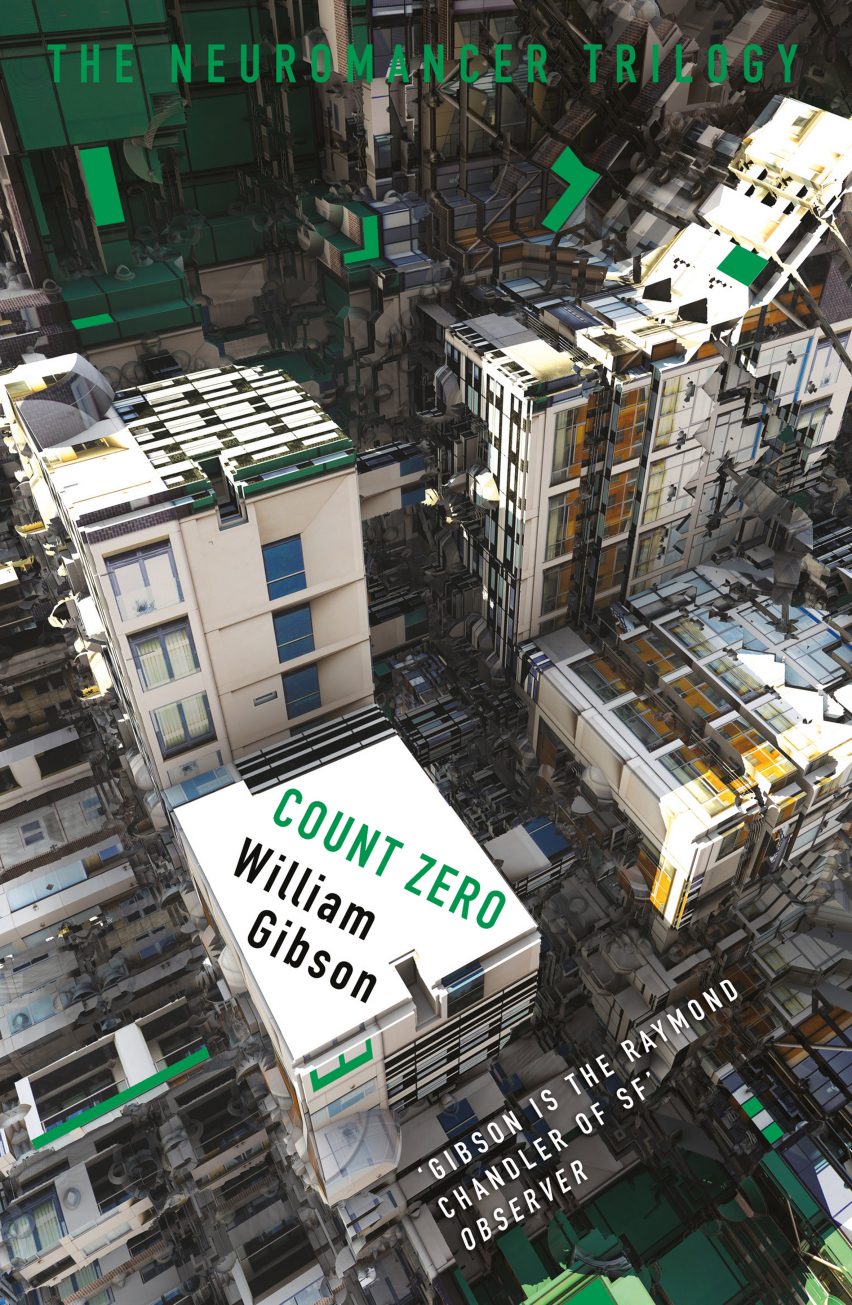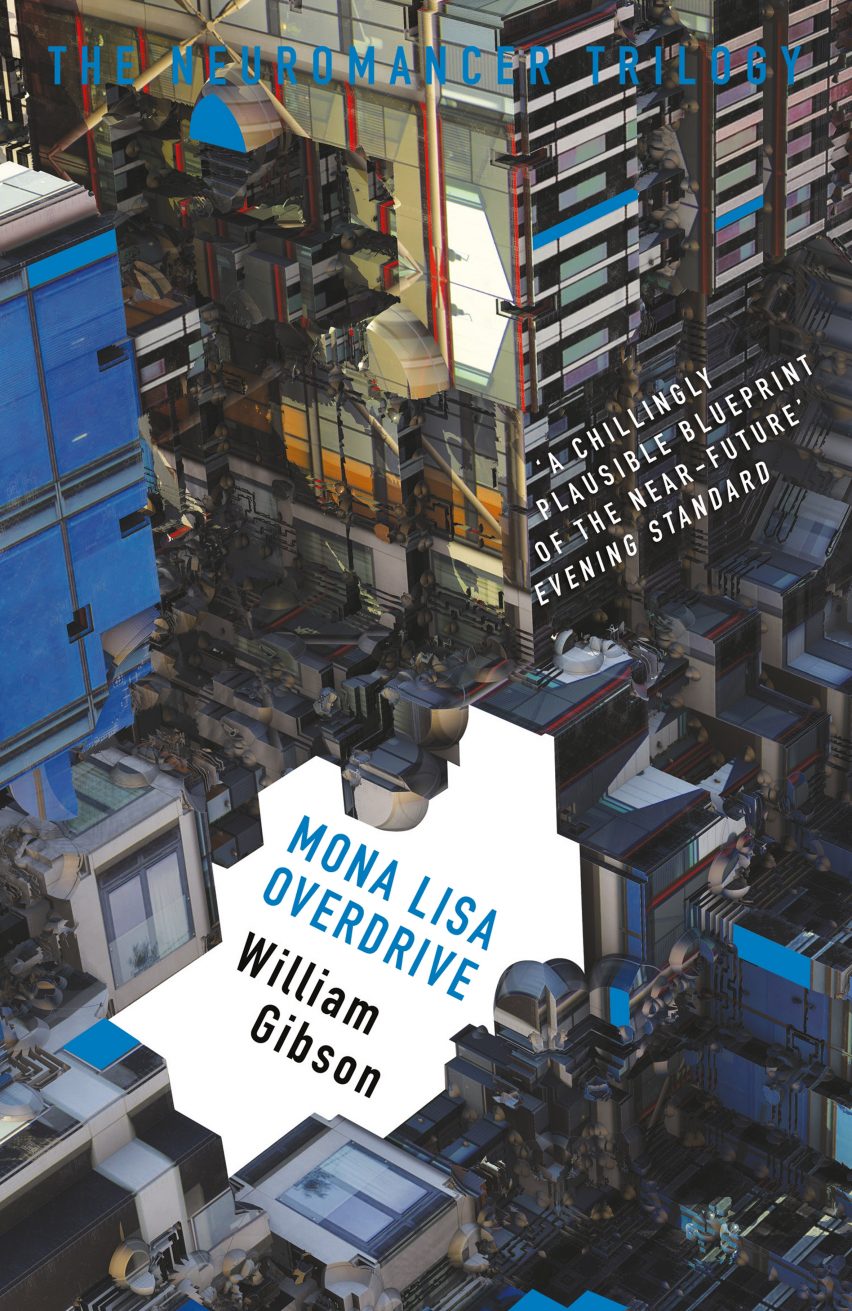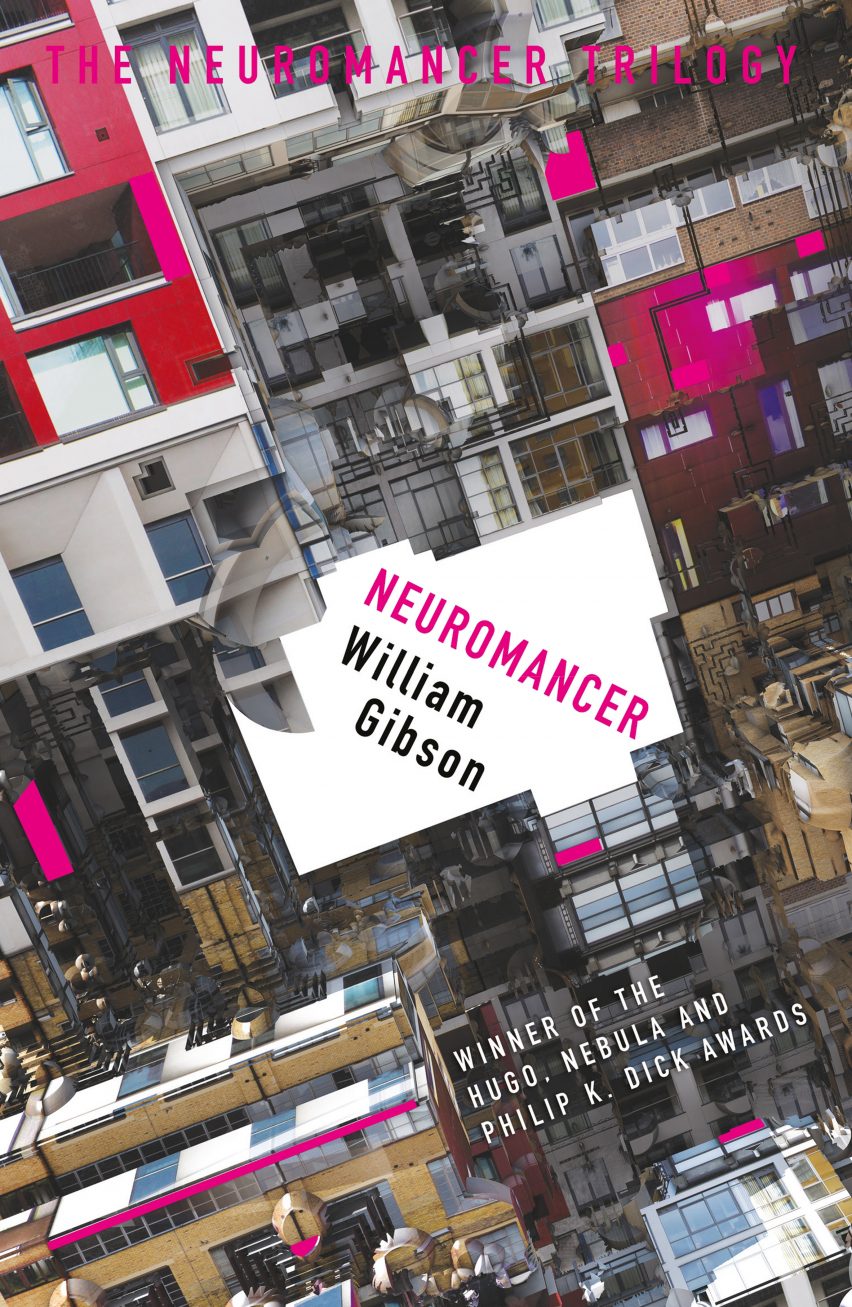
Abstracted architecture graces new covers for William Gibson's dystopian novels
Inception-esque folded buildings feature on new book covers for the science-fiction novels of William Gibson.
Digital artist Daniel Brown put his own architecture photography through fractal mathematics software to generate the cover images.

The illustrations decorate the covers of four of Gibson's books – three novels from the Sprawl trilogy and one collection of short fiction.
All three novels – Neuromancer, Count Zero and Mona Lisa Overdrive – take place in a dystopian, cyberpunk-inflected future, and Brown aimed to reflect this setting in his covers.

London-based Brown – an artist, designer and programmer – achieved the abstracted look of the covers by using fractal mathematics.
The design method involves repeating an image over and over at varying scales to create a never-ending, complex pattern.

Brown used computer software to apply this method to images from his architectural photography portfolio.
The designer says he was personally approached by Gibson to create the cover designs for the books, which have been recently acquired by science-fiction publisher Gollancz, an imprint of Orion.

"I had been experimenting with generating architecture via computer code," said Brown on the Gollancz blog. "As a project it was still in its infancy and without real purpose."
"Then William Gibson contacted me, and stated it was exactly how he had envisaged The Sprawl. In an uncanny way the code found its own purpose."
Recent years have seen a number of book publishers coming up with novel ways to entice readers. US publisher Riverhead collaborated with MakerBot to create the first ever 3D printed book sleeve, and Utrecht studio Today Designers created a book entirely printed with squid ink.
Meanwhile, Amsterdam-based studio Moore designed a book cover that scans your face and won't open unless approached without prejudice.